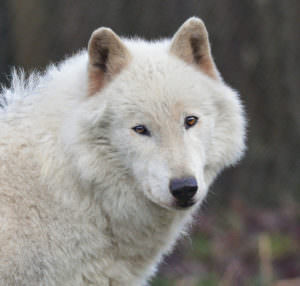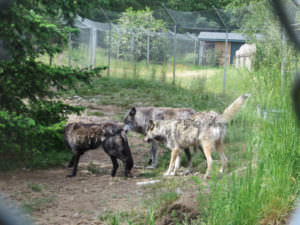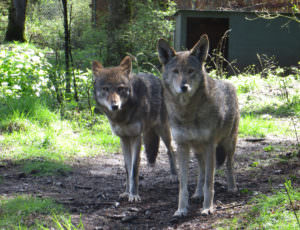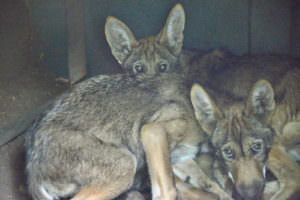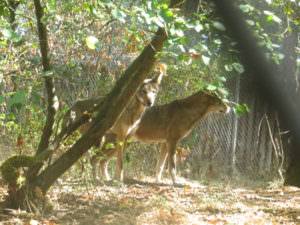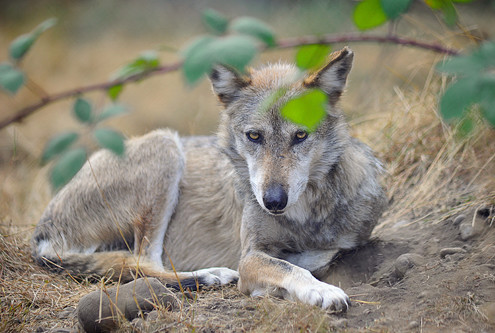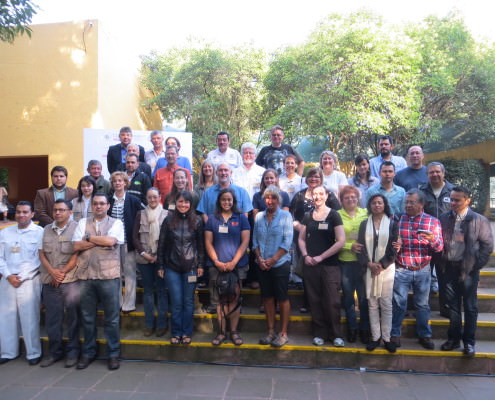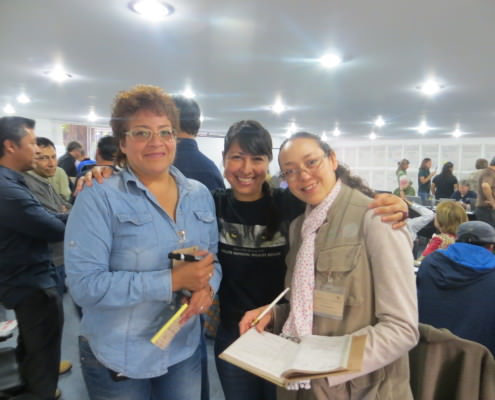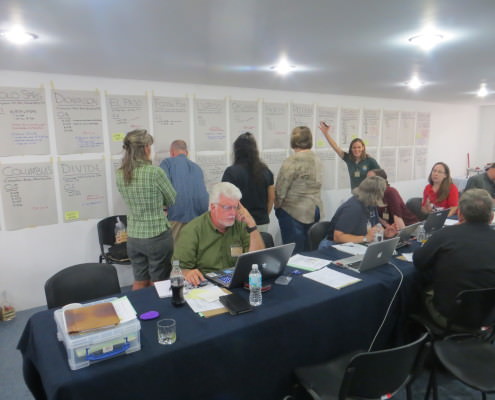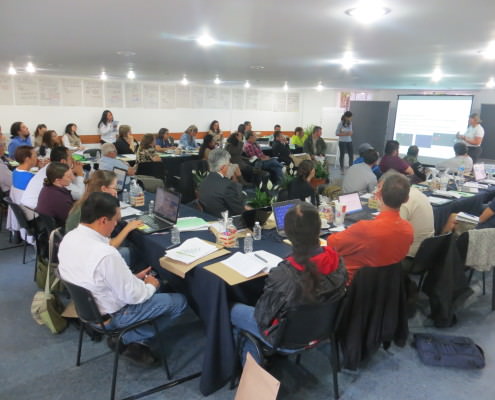Summer Sanctuary Update at Wolf Haven
by Pamel Maciel, Mexican Wolf SSP/Hispanic Outreach Specialist, Wolf Haven International
This article was originally published in the Summer 2016 issue of Wolf Tracks, Wolf Haven’s quarterly magazine for Members.
Our recount of these last few months is a bittersweet one. In late March, we lost our dear friend Spruce. He was a sweet 13-year old male gray wolf who passed after a year and a half period of health decline. For some of us, Spruce’s passing hasn’t been easy to assimilate. He was a big white wolf with a conspicuous presence. Every time Animal Care staff was feeding in the area, Spruce “followed” us along the fence line, observing each of our movements. He stared at us with intense focus, as if hoping that every meatloaf, chicken, salmon or treat in the truck was for him and only him. Farewell, beautiful Spruce, you will always be part of the sanctuary.
While some go, others come and this spring we warmly received Tecumseh, a high-content wolfdog born to the pet trade. “T” is of shy temperament and has a gorgeous expressive face. He is currently housed with hyperactive wolfdog sisters Willow and Senna, who are making sure his life here is anything but boring. Welcome handsome “T”!
In a humbling expression of the cycle of life, Wolf Haven’s red wolf community experienced a couple of changes. In June we said goodbye to both Jacob (M1405) and Tamaska (F1485). For several days prior to his passing, Jacob wasn’t his usual self. When we took him to the clinic, his blood profile revealed chronic renal failure -a common disease in older canines (Jacob was 11 years old, an advanced age for a wolf.) As his kidneys weren’t functional, the best we could do was help him peacefully move on from this life. Tamaska had a really hard time losing her friend. Usually the remaining companion will grieve for several days, so we allow them time and space to adjust before making any changes or bringing a new mate. After two weeks, she still had no appetite and was very lethargic. We decided to take her to the vet and, unfortunately, tests results were consistent with Addison’s decease.
The most likely scenario is that she had this underlying condition for a while but the stress of Jacob’s passing was the tipping point. They were very bonded and it’s difficult to say what her quality of life would have been moving forward. We could have tried to manage it (the condition is fairly common in certain breeds of dogs) but it would have required catching her up every 20 days for the rest of her life for injections, which is ok perhaps for a domestic dog, but not for a red wolf.
The kindest thing we could do was to help her pass on and join her beloved friend. Jacob and Tamaska lived and died as a tightly bonded pair. We will always have them in our hearts.
On the uplifting side of news, we have red wolf pups! In June, they started crawling out of the den and exploring all the surroundings. Nash (F1945) is being a wonderful mom, taking the best possible care of her kids, nursing them and keeping them safe.
She initially gave dad Tala (M1482) a hard time when he tried to approach the pups, but eventually she welcomed him to the group, keeping an eye on him and making sure he is delicate and careful at all times. Watching the family dynamics via remote camera is such a delight; we are lucky to be able to learn from them! This litter is a result of the red wolf Species Survival Plan (SSP) efforts. Every single one of these little beings is an invaluable contribution to the conservation of the extremely endangered red wolf, the only wolf species endemic to the United States.

